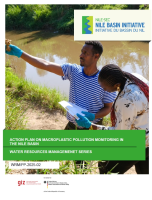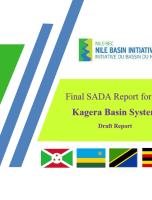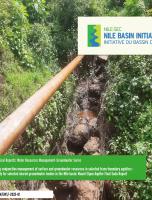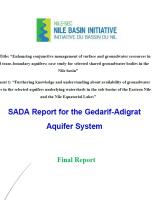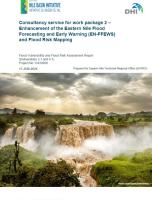Abstract
The potential for water saving from improved irrigation efficiency in the Nile Basin is presented in this document. This is a result of analytic work carried out by NBI Secretariat (Nile-SEC) and the Justus Liebig University (Germany) under contract with the GIZ. The study is intended to provide indicative orders of magnitude of water saving that can be achieved by improving irrigation practices (focus on improving efficiencies). 2011 has been taken as baseline year and 2050 as the future date at which all national plans on expanding irrigated agriculture in the Nile Basin would have been implemented. While the expansion in irrigated agriculture is assumed to take place as per national plans and, hence, no scenarios of such
expansions constructed, scenarios of plausible irrigation efficiency improvements have been used to estimate impacts of irrigation efficiency improvements on water saving. The study relied on NBI’s own database, global datasets and data from published material and modeling tools at the NBI secretariat and the Justus Liebig University. The Nile is the longest river in the world with a total length of nearly 6700 km. Its basin covers an area of approximately 3.1 million square kilometers. Compared to many large rivers of comparative size worldwide, the Nile has relatively small annual runoff with an average annual discharge between 40 and 150 km³ yr-1at the Aswan Dam (Johnston, 2012).Currently some 5.3 M hectares of land are equipped for irrigation in the Nile Basin countries out of which 5.1 M hectares (97 %) are in Egypt (3.45 M hectares) and Sudan (1.71 M hectares). While the actual harvest area is about 68 per cent in Sudan (largely due to shortage of water), the harvest area in Egypt is 5 M hectares (cropping intensity of 146 per cent). The Nile Basin has quite substantial irrigable land yet to be tapped. According to consulted national documents from Nile Basin countries, there is a potential to expand the total irrigated area by additional 3.4 M hectares. Most of this expansion is expected in Ethiopia (1.4 M hectare), Sudan (about 1 M hectares) and Egypt (0.5 M hectares). The cropping intensity in Sudan can increase from current 68 per cent to 90 percent leveraging more regulated flow of water from the additional storage dams to be built in Ethiopia.
